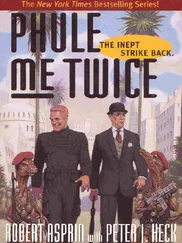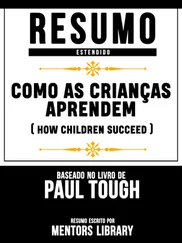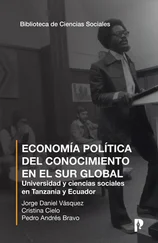brilliant teachers suddenly go downhill: See, e.g., Michael Marder, “Visualizing Educational Data,” unpublished paper, Department of Physics, University of Texas at Austin, February 9, 2011; and Michael Marder, “Failure of U.S. Public Secondary Schools in Mathematics: Poverty Is a More Important Cause than Teacher Quality,” unpublished paper, 2011.
teacher quality probably accounted for less than 10 percent: Hanushek, Kain, and Rivkin, “Teachers, Schools”; Eric Eide, Dan Goldhaber, and Dominic Brewer, “The Teacher Labour Market and Teacher Quality,” Oxford Review of Economic Policy 20, no. 2 (Summer 2004): 232.
$41,348 for a family of four: United States Department of Agriculture Food and Nutrition Service , National School Lunch Program Fact Sheet (Washington, DC: United States Department of Agriculture Food and Nutrition Service, October 2011).
covers about 40 percent of American children: U.S. Census Bureau, Current Population Survey, 2011 Annual Social and Economic Supplement, http://www.census.gov/hhes/www/cpstables/032011/pov/new01_185_01.htm.
just one student in eight doesn’t qualify: As of the spring of 2012, 87 percent of Chicago public school students are low-income by federal education standards. “Stats and facts” page, Chicago Public Schools website, http://www.cps.edu/about_cps/at-a-glance/pages/stats_and_facts.aspx.
about 10 percent of all American children: DeNavas-Walt, Proctor, and Smith, Income, Poverty, 19, table 6.
an income of less than about $11,000 a year: Ibid., 61. See also Hope Yen and Laura Wides-Munoz, “Poorest Poor in US Hits New Record: 1 in 15 People,” Associated Press, November 3, 2011.
more than seven million American children: DeNavas-Walt, Proctor, and Smith, Income, Poverty, 19, table 6.
an effective program of support for parents: See, for instance, Jack Shonkoff, speech at the NBC News Education Nation Summit, September 26, 2011, http://developingchild.harvard.edu/index.php/resources/multimedia/lectures_and_presentations/education_nation/.
between seven and twelve dollars of tangible benefit: James J. Heckman, Seong Hyeok Moon, Rodrigo Pinto, Peter A. Savelyev, and Adam Yavitz, “The Rate of Return to the High/Scope Perry Preschool Program,” Journal of Public Economics 94, nos. 1 and 2 (February 2010).
A. J. (IS 318 student)
ABC program. See Attachment and Biobehavioral Catch-Up (ABC) program
academic self-control
ACE (Adverse Childhood Experiences) scores
ACE Tech Charter High School
achievement, dimensions of,
achievement gap
executive functions and,
OneGoal students and,
policy debates and,
teacher quality and,
achievement tests. See also standardized college admissions tests
low-scorers on,
malleability of intelligence and,
as predictor of life outcomes,
unfulfilled potential and,
ACT test
college success and,
Kewauna’s story and,
as measure,
score improvement efforts and,
ADHD (attention deficit hyperactivity disorder)
adolescence
decision making and,
discipline and,
early nurturing and,
effectiveness of interventions in,
effects of childhood stress in,
affluent students. See privileged students
African American students. See also Black, James, Jr.; Lerma, Kewauna; Williams, Justus
chess and,
college and,
compared with affluent white teens,
Ainsworth, Mary
Albert, Derrion
Alinsky, Saul
allostatic load
executive functions and,
index for,
parenting and,
Amistad Academy in New Haven
Anda, Robert
animal-behavior studies. See LG study
anxiety
anxious attachment
Aronson, Joshua
Ashley, Maurice
Attachment and Biobehavioral Catch-Up (ABC) program
attachment relationships
interventions and,
Minnesota study on,
parental history and,
parenting and,
as predictor of success,
Babcock, Philip
Barayev, Isaac (student)
Bayview Child Health Center in San Francisco
behavioral theory
behavior modification
The Bell Curve (Murray and Herrnstein)
Bennett, Juaquin (KIPP student)
Bennett, William
Binet, Alfred
Black, James, Jr. (IS 318 student)
chess rating,
Columbus tournament and,
match against Lapshun,
specialized-school test and,
Black, James, Sr.
Blair, Clancy
Block, Jack
blood pressure, and health risk,
Bowen, William G.
Bowlby, John
Bowles, Samuel
Bridges, Ruby Nell
Bring Up Genius! (Polgar)
Brunzell, Tom
Burke Harris, Nadine
neuroscientific perspective and,
Byrne, Ruth,
CARE. See Children Aware of Riverdale Ethics (CARE)
Caspi, Avshalom,
CBT. See cognitive-behavioral therapy (CBT)
character. See also character strengths; noncognitive skills
habits and,
infant brain chemistry and,
meaning of,
quantification of,
rules and,
character-education initiatives,
Character Education Partnership,
character report card
development of,
character strengths. See also grit; noncognitive skills; optimism; self-control
American high school students and,
as antipoverty tool,
definition of character and,
development of,
dual-purpose instruction and,
good habits and,
high-school GPA and,
KIPP development of,
malleability of,
parenting and,
Peterson’s list of,
risk of failure and,
as social safety net
teaching technique and,
Character Strengths and Virtues: A Handbook and Classification (Seligman and Peterson)
charter schools. See also ACE Tech Charter High School; KIPP middle schools
chess. See also chess mastery; chess tournaments; Spiegel, Elizabeth
IQ and,
and thinking habits,
Chess-in-the-Schools
chess mastery
African Americans and,
allure of,
deliberate practice and,
mental abilities in,
chess ratings
James Black and,
chess tournaments
elite dominance of,
team strategy and,
Chicago Public Schools reform initiatives
Chicago Tribune,
childhood trauma. See also ACE (Adverse Childhood Experiences) scores
adolescence and,
adult outcomes and,
neurophysiological effects of,
nurturing parenting habits and,
prevalence of,
child-parent psychotherapy
Children Aware of Riverdale Ethics (CARE),
Child Trauma Research Program, University of California at San Francisco
Chingos, Matthew
Cicchetti, Dante
Clarke, Whitney
Clinton, Hillary
Clinton, William Jefferson (U.S. president)
coding-speed test
cognitive-behavioral therapy (CBT)
cognitive control system. See also self-control
cognitive flexibility
cognitive hypothesis. See also intelligence; Murray, Charles
cognitive self-control
Cohen, K. C.
Colas, Joshua
College Advisory Playbook (KIPP)
college graduation trends
college students
college access vs. completion and,
jobs of graduates and,
KIPP graduates as,
OneGoal program and,
relationships with professors,
time use by,
college wage premium
“compliance-based” discipline system
CompStat data analysis system
compulsiveness
confidence
confirmation bias
Читать дальше



![Коринн МакКей - How to Succeed as a Freelance Translator [calibre 3.46.0]](/books/402693/korinn-makkej-how-to-succeed-as-a-freelance-transl-thumb.webp)








